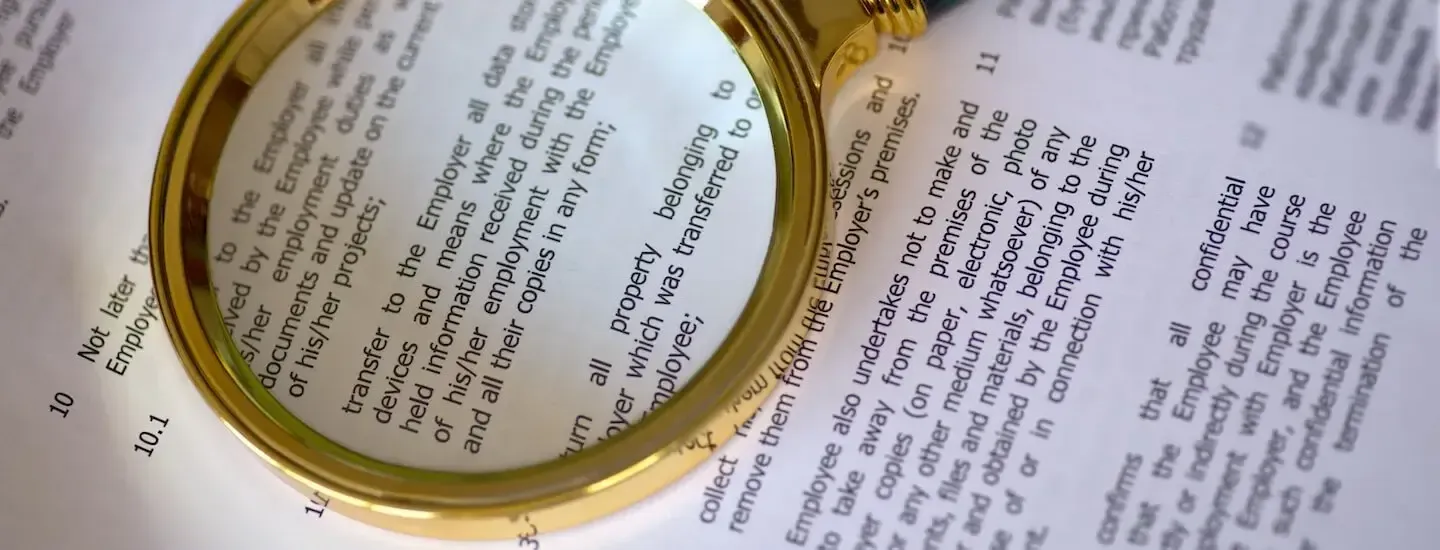How to Create a Long Term Maintenance Plan
Creating a comprehensive long term maintenance plan from scratch can feel like a daunting task. Getting it right means having a deep understanding of the property's needs, knowledge of any legal requirements, and an insight into best practices.
In this article we aim to guide body corporate members, property managers, and homeowners' associations through the process of creating a robust long term maintenance plan (LTMP) with ease.
We will explore the implications of The Unit Titles (Strengthening Body Corporate Governance and Other Matters) Amendment Act 2022 (the Amendment Act), and the final Unit Titles Amendment Regulations 2024, which came into effect on 9th May 2024, and the role of the body corporate.
Whether you are a seasoned professional or new to property management, this guide will be a valuable resource.
Understanding long term maintenance
Long term maintenance is a proactive process undertaken by bodies corporate, involving regular inspections of the unit title development, and servicing and repairs of infrastructure to prevent potential failures.

Having an effective long term maintenance plan (LTMP) will help to maintain the property's condition and prevent costly, unexpected repairs. It will also help to extend the life of the property’s assets and enhance the property's value and appeal to tenants or potential buyers.
Scheduled maintenance is not just about physical upkeep, it also involves compliance with legal requirements and standards. In the context of The Unit Titles (Strengthening Body Corporate Governance and Other Matters) Amendment Act 2022, it becomes even more significant.
The role of bodies corporate in maintenance
The body corporate is responsible for the upkeep of common areas and shared facilities in their unit title developments and therefore play a crucial role in property maintenance. Some of the duties that need to be considered are general cleaning, gardening, and repairing shared infrastructure as well as ensuring compliance with health and safety regulations. On top of this, and of great importance, bodies corporate must plan and budget for long-term maintenance.
Legal obligations and long term maintenance planning
Under The Unit Titles (Strengthening Body Corporate Governance and Other Matters) Amendment Act 2022, bodies corporate have specific legal obligations. They must establish a long term maintenance plan that covers at least 10 years for developments with 1-9 units and 30 years for those with 10+ units. This plan should include a detailed schedule of maintenance tasks from the roof and cladding to plumbing and electrical systems. No crucial component can be overlooked. There must be realistic time frames for repairs and a reserve fund to cover the costs. Additionaly, the plan must be visible to all unit owners upon request, promoting accessibility and transparency. Failure to meet these obligations can lead to legal consequences.
The Unit Titles Amendment Act 2022 and long term maintenance
The Unit Titles (Strengthening Body Corporate Governance and Other Matters) Amendment Act 2022 has significant implications for long term maintenance planning. Under this Act;
- Bodies corporate must establish a long-term maintenance plan lasting a minimum of 10 years for smaller developments (1-9 units), and 30 years for larger developments (10 + units).
- Large developments require detailed costs for the first 10 years of anticipated maintenance, whilst smaller developments can have more high-level cost estimates for the entire plan
- It is strongly advised that long term maintenance plans are reviewed by a professional who can confirm that plan is fit for purpose. If the body corporate decides that they do not wish to adhere to this then a special resolution must be passed at the AGM.
- All LTMPs must be reviewed at least every three years and/or if any significant event occurs that might impact maintenance needs.
Failure to comply with these requirements can lead to legal consequences so understanding this Act is crucial.
Crafting your maintenance plan
Creating a long term maintenance plan is a strategic process which requires a thorough understanding of the property's current condition and future needs. The plan should be comprehensive, covering all aspects of maintenance, including routine tasks, preventative measures, and long-term projects.
Step-by-step guide to developing a comprehensive plan
- Assess the property's current condition: As a committee, or with the help of a professional, start by conducting a thorough assessment of the property. Identify any existing issues that need immediate attention.
- Identify critical assets: Next, identify the critical assets that require regular maintenance. These could include HVAC systems, elevators, and/or roofing.
- Understand the building's lifecycle: Assess the life span of the development’s assets, and their expected deterioration rate, and create a maintenance timeline.
- Estimate costs: When estimating the costs of each maintenance task, remember to include labour, materials, and any other easily forgotten costs.
- Create a maintenance schedule: Based on your assessment, create a detailed schedule of maintenance tasks. This should include both routine tasks and long-term projects.
- Prioritise tasks: Prioritise tasks based on their urgency and impact on the property's condition.
- Establish a Reserve Fund: Establish a reserve fund to cover the costs of maintenance tasks. This is a legal requirement under The Unit Titles (Strengthening Body Corporate Governance and Other Matters) Amendment Act 2022. It is usually advised not to call this fund a “Long Term Maintenance Fund” as this will place conditions on how the fund can be used. You can read more about this point in another of our articles ”What is a Long Term Maintenance Fund”
- Document everything: Keep detailed records of all maintenance activities. This is crucial for legal compliance and future planning.
- Review and update the plan regularly: A maintenance plan is not a static document. According to The Unit Titles (Strengthening Body Corporate Governance and Other Matters) Amendment Act 2022, it should be reviewed and updated at least every 3 years by an industry professional to reflect changes in the property's condition and needs.
- Engage stakeholders: Finally, engage with stakeholders, including property owners and tenants, for the sake of accuracy and transparency. Their feedback can provide valuable insights for improving the maintenance plan.
Prioritising maintenance tasks and asset management
Remember that not all tasks are equally urgent or important. Some, like repairing a leaking roof, may need immediate attention whilst others, such as repainting walls, can probably be scheduled for a later date. Asset management is also crucial. Understanding the value and lifespan of each asset can help you make informed decisions about maintenance priorities.
Budgeting and financial planning for maintenance
Ensuring you have sufficient funds for your projects is a critical part of long term maintenance planning.
A well-planned, and healthy, budget will help you avoid unexpected costs and financial stress. It will mean you can allocate resources effectively and make informed decisions about maintenance priorities, and it has a direct impact on the property's value and the satisfaction of its occupants.
Estimating the costs of maintenance tasks is not always straightforward. It requires a thorough understanding of the property and its components. You will need to consider the cost of materials, labour, and any potential disruptions to operations. It may be beneficial to enlist the help of professionals for help with this.
Remember, a well-funded reserve is not just a legal requirement, it's also a smart financial strategy that can help you maintain the value of your property and avoid costly emergency repairs.
Implementing and tracking your long term maintenance plan
Once you have your maintenance plan and budget in place, the next step is implementation, carrying out the planned tasks and tracking their completion. Effective tracking means you can monitor the progress of your plan and be confident that all tasks are completed on time and within budget. It will also provide you with valuable data for future planning and decision-making.
Using software and record-keeping for compliance
In today's digital age, there are numerous software solutions available to help with long term maintenance. These tools can automate scheduling, send reminders, and generate reports.
They can also help with record-keeping, a crucial aspect of maintenance planning. Keeping detailed records of all maintenance activities is not just good practice, it's also another of the legal requirements under The Unit Titles (Strengthening Body Corporate Governance and Other Matters) Amendment Act 2022. These records can provide evidence of compliance and can be invaluable in the event of disputes or legal issues.
Good record-keeping will help you identify trends and patterns which in turn can inform future planning and help you optimize your maintenance strategy.
Engaging stakeholders and reviewing the plan
Engaging stakeholders - body corporate members, property managers, homeowners' associations, and tenants - is a critical part of long term maintenance planning. Their input and feedback is vital to ensure the plan meets everyone's needs.
Regularly reviewing and updating the plan is also very important. It will allow you to adapt to changes in the property's condition, confirm that you are both compliant with any legal requirements, and that you are meeting the stakeholder needs and building their trust. Probably the most effective communication strategy is to hold regular meetings. They provide a platform for discussion, addressing concerns, and making collective decisions. They can also foster a sense of ownership and involvement among stakeholders. In addition to meetings, you could consider using digital tools for communication, such as email updates, online forums, or maintenance management software. These tools can make communication more efficient and accessible and can also provide a record of discussions and decisions.
Conclusion: The benefits of a well-executed Long Term Maintenance Plan
A well-executed long term maintenance plan is a powerful tool. It can help preserve property value, ensure legal compliance, and enhance tenant satisfaction. By investing time and resources into creating and implementing a comprehensive plan, you can secure the longevity of your property and its assets.





